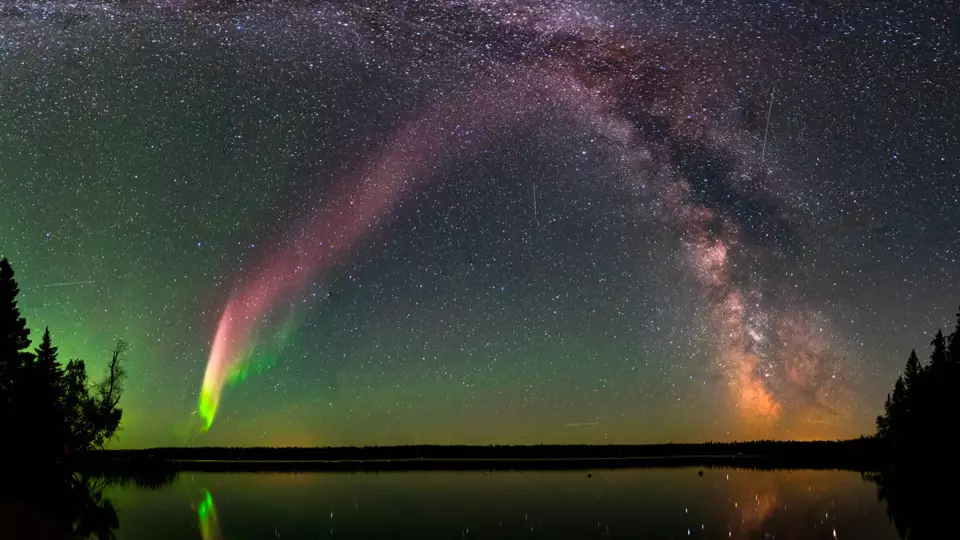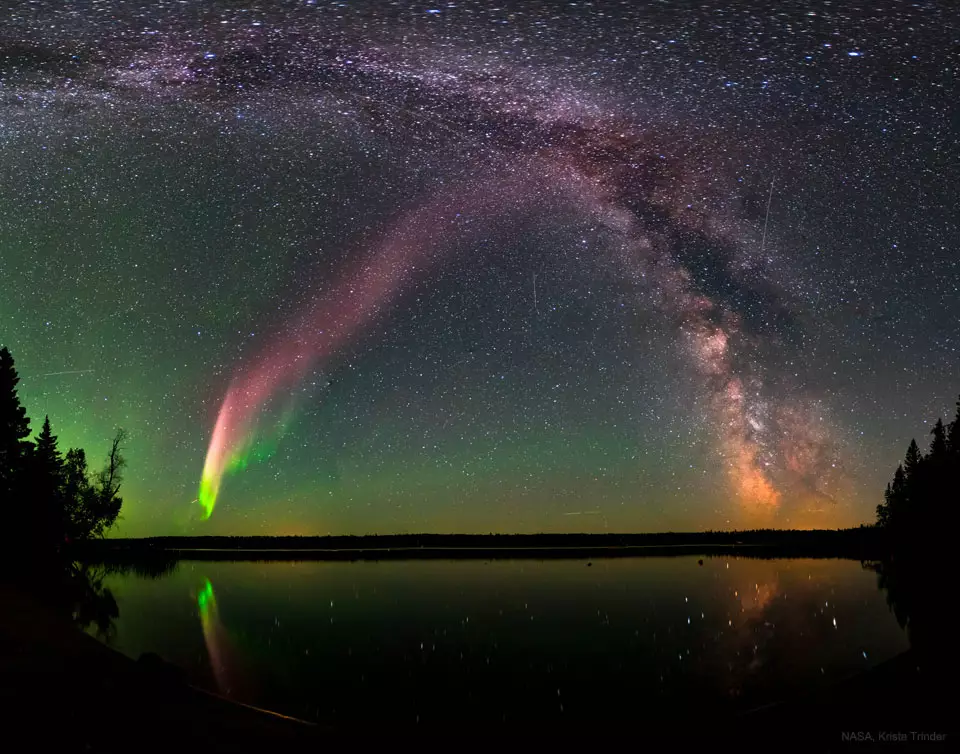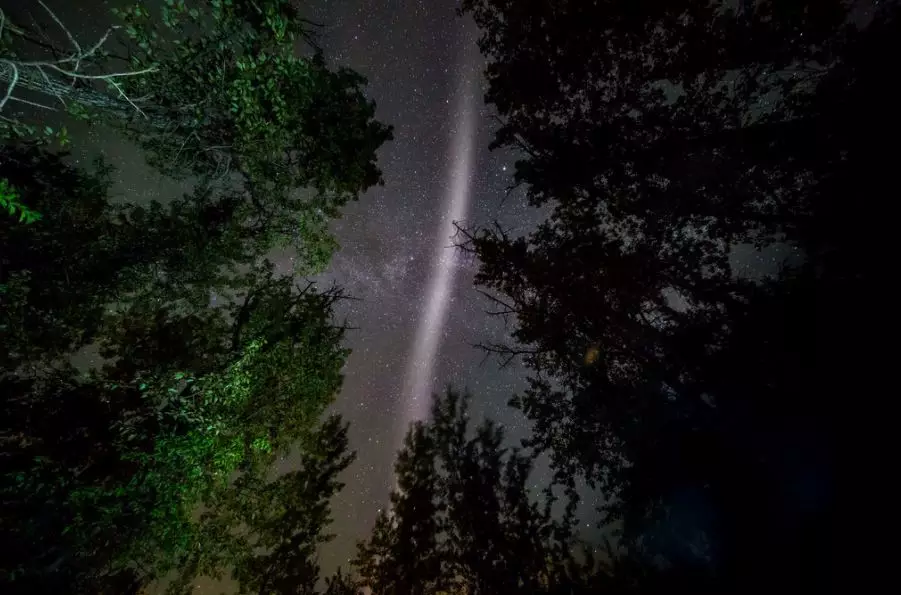
NASA has shared a photograph of an astronomical phenomenon that still mystifies scientists.
Strong Thermal Emission Velocity Enhancements, or STEVEs for short, are aurora-like ribbons of light that stream across the night sky.
Dozens have been sighted over the past few years, with scientists scratching their heads as to what they actually are.
Advert
As part of the space centre's 'Astronomy Picture of The Day', NASA shared a stunning example of one over Childs Lake in Canada, which was taken by photographer Krista Trinder back in 2017.
NASA wrote alongside the photo: "What's creating these long glowing streaks in the sky? No one is sure. Known as Strong Thermal Emission Velocity Enhancements (STEVEs), these luminous light-purple sky ribbons may resemble regular auroras, but recent research reveals significant differences.

"A STEVE's great length and unusual colors, when measured precisely, indicate that it may be related to a subauroral ion drift (SAID), a supersonic river of hot atmospheric ions thought previously to be invisible.
Advert
"Some STEVEs are now also thought to be accompanied by green picket fence structures, a series of sky slats that can appear outside of the main auroral oval that does not involve much glowing nitrogen. "
Over the past few years, a number of 'aurora chasers' have been out trying to capture snaps of STEVEs in an effort to find out more about the phenomenon.
And it's hoped that new information about the 'formation of streaks within the structure', which are often very clear in many of the images, could hold the key.
Elizabeth MacDonald, a space scientist at NASA's Goddard Space Flight Center in Greenbelt, Maryland, said: "Often in physics, we build our understanding then test the extreme cases or test the cases in a different environment.
Advert
"STEVE is different than the usual aurora, but it is made of light and it is driven by the auroral system. In finding these tiny little streaks, we may be learning something fundamentally new in how green auroral light can be produced."
A new paper in AGU Advances discusses the significance of these green fence-like streaks and what they might be.

Researchers suggest they could be moving points of light, though there is no widespread agreement as to whether the green light is, in fact, a point or a line.
Advert
Joshua Semeter, a professor at Boston University and first author on the paper, said: "I'm not entirely sure about anything with respect to this phenomenon just yet.
"You have other sequences where it looks like there is a tube-shaped structure that persists from image to image and doesn't seem to conform to a moving point source, so we're not really sure about that yet."
Scientists usually classify optical features in the sky in one of two categories: airglow or aurora.
According to NASA, an airglow is when 'atoms in the atmosphere recombine and release some of their stored energy in the form of light'.
Advert
While an aurora that releases light is caused by electron bombardment.
But even with these handy classifications, Semeter says scientists still aren't certain about STEVEs.
He added: "STEVE in general appears to not conform well to either one of those categories. The emissions are coming from mechanisms that we don't fully understand just yet."
Topics: Science, Technology